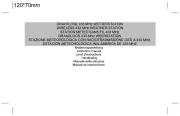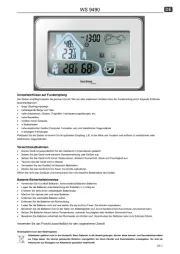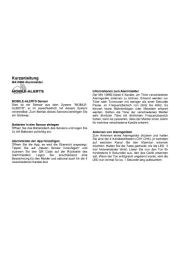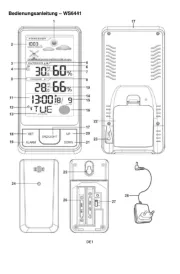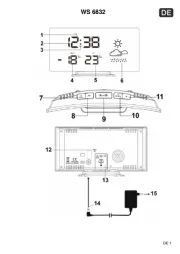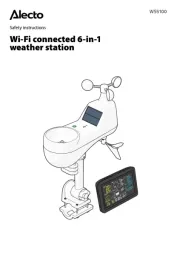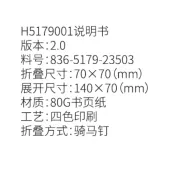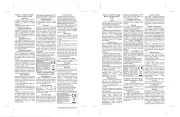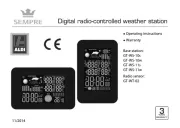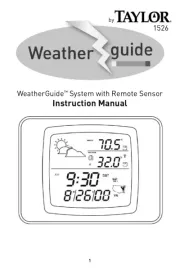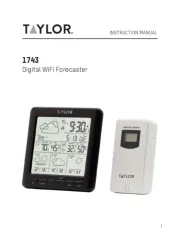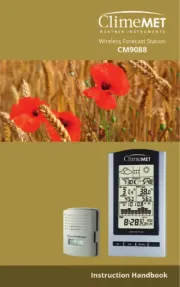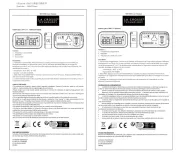WS9767 - INSTRUCTION MANUAL
TEMPERATURE STATION WITH RADIO CONTROLLED CLOCK AND ALARM
ENVIRONMENTAL RECEPTION EFFECTS
The temperature station obtains the accurate time with wireless technology. Same as all
wireless devices, the reception is maybe aected by the following circumstances:
•
Long transmitting distance
•
Nearby mountains and valleys
•
Among tall buildings
•
Near freeway, railway, airports, high voltage cable etc.
•
Near construction site
•
Inside concrete buildings
•
Near electrical appliances (computers, TV’s, etc)
•
Inside moving vehicles
•
Near metallic structures
Place the temperature station at a location with optimal signal, i.e. close to a window and away
from metal surfaces or electrical appliances.
QUICK SETUP
1. Keep the temperature station and outdoor sensor next to each other. Slide open the battery
cover at the back of the outdoor sensor. Make sure the channel selector is set at position
CH1 (when using multiple transmitters: for second transmitter CH2, for third transmitter
CH3), then insert 2 x AAA batteries (not included) into the outdoor sensor by observing the
correct “+/-“ polarity signs inside the battery compartment. Replace the battery door.
2. Slide open the battery cover at the back of the temperature station, then insert 2 x AA
batteries (not included) by observing the correct “+/-“ polarity signs inside the battery
compartment. Then replace the battery cover.
3. Peel off the protective label on the front. The temperature station is ready to work for you.
The temperature station will receive data signal from the outdoor sensor in few seconds. Then
place the outdoor sensor in a dry and shaded area outdoor.
DCF SIGNAL RECEPTION AND SIGNAL INDICATOR
The time base for the radio controlled time is a Cesium Atomic Clock operated by the
Physikalisch Technische Bundesanstalt Braunschweig which has a time deviation of less than
one second in one million years. The time is coded and transmitted from Mainingen near
Frankfurt via frequency signal DCF-77 (77.5 kHz) and has a transmitting range of
approximately 1,500 km. The clock of the temperature station receives this signal and converts


